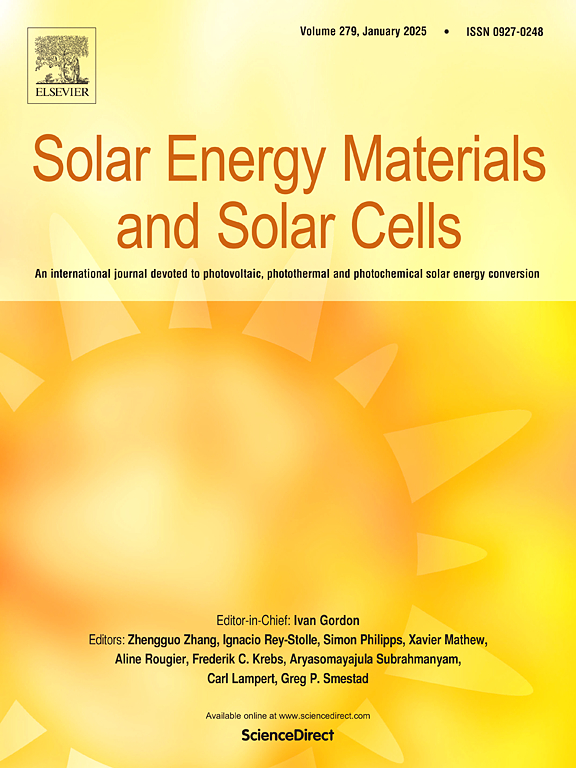Interconnection of low-temperature metallization on silicon solar cells - The role of silver in tin-bismuth-based solder alloys
IF 6.3
2区 材料科学
Q2 ENERGY & FUELS
引用次数: 0
Abstract
This study investigates the potential of tin-bismuth (SnBi) alloys micro-alloyed with silver (Ag) to enhance low-temperature (LT) soldering for photovoltaic (PV) modules. The primary focus is on addressing challenges such as intermetallic compound (IMC) formation, which can compromise mechanical strength and durability under thermal cycling, thereby improving the long-term stability of solder joints. A systematic investigation of the influence of the Ag amount is being conducted with the intention to find the optimal alloy composition for SnBi solder joints on LT metallization contacts. The objective is to provide a cost-effective, lead-free alternative for the interconnection of temperature-sensitive solar cells like silicon heterojunction (SHJ) cells. The findings illustrate that the addition of 0.4 %wt. Ag notably enhances the wettability and initial mechanical strength of the solder. An increase in the Ag content to 1.0 %wt. results in an excessive growth of IMC, which in turn leads to increased brittleness and potential long-term stability issues of the solder joint. Thermal cycling tests demonstrate that modules soldered with SnBiAg0.4 exhibited less than -5 % loss in power. This composition represents an optimal balance between performance and cost. These findings show the potential of SnBiAg0.4 as a suitable solder alloy regarding long-term stability and electrical performance for interconnection of LT metallization contacts of solar cells in PV module manufacturing.
求助全文
约1分钟内获得全文
求助全文
来源期刊

Solar Energy Materials and Solar Cells
工程技术-材料科学:综合
CiteScore
12.60
自引率
11.60%
发文量
513
审稿时长
47 days
期刊介绍:
Solar Energy Materials & Solar Cells is intended as a vehicle for the dissemination of research results on materials science and technology related to photovoltaic, photothermal and photoelectrochemical solar energy conversion. Materials science is taken in the broadest possible sense and encompasses physics, chemistry, optics, materials fabrication and analysis for all types of materials.
 求助内容:
求助内容: 应助结果提醒方式:
应助结果提醒方式:


